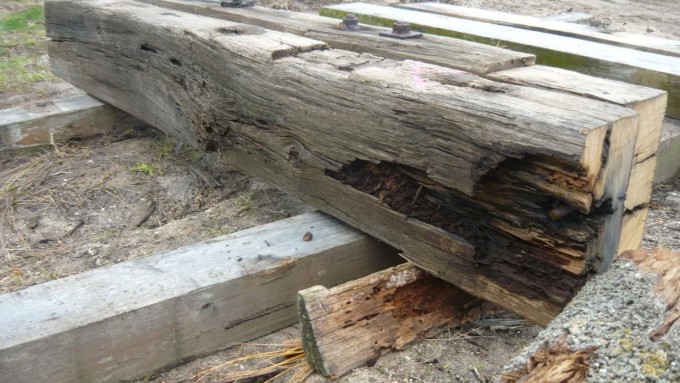How To Identify Termite Damage

If on your annual preventative check you notice changes to the wood in or around your home, it doesn’t necessarily mean that termites are present. There are other factors that can affect timber over time, including rot and water damage.
Is it water damage?
Although quite a different scenario from termites, water damage can still be very expensive to fix. As builders and building inspectors, as well as pest inspectors, you can contact us with any concerns you have. We have the qualifications and the experience to professionally assess and repair all types of damage and restore your property’s protection level.
Depending on where it’s coming from, where it’s going, and how long it’s been left undetected, water damage can be the source of a major problem. In severe cases, water damage may badly affect the plaster in your home. Water can cause damage to insulation as well as the structural components of your home, in the timber, stud walls, and rafters.
Water damage may appear as different colours or textures and even smells. Water spots and stains should be fairly easy to identify on the walls and ceilings and are a sure sign that you are dealing with water damage. Does the wall look swollen? Is it soft to touch?
Is it rot?
Like termite damage, wet rot can be difficult to identify. Like termites, it can invade areas of your home that you may not check regularly – behind the stairs and underneath the flooring for example. If you find a white or dark stain on your wood floors, if the carpet is damp or there’s a musty smell in the air, act quickly to avoid the rot setting in! Once timber reaches a high level of moisture it will begin to break down. Cracking and darker lines through the timber could indicate rot. If you find a white fungal growth on your timber, that indicates a wet rot (or dry rot) situation. Dry rot damage is more serious than wet rot as it can spread between building materials, something wet rot cannot do. Ventilation, or the lack thereof, can also be a determining factor. Make sure all your cupboards and internal spaces are aired regularly.
It doesn’t really matter what has caused the wood to decay, any fungi produces an odour that can attract termites.
Is it termite damage?
It’s not common to see termite damage on wood surfaces in and around your property. Termites eat from the inside out. We use thermal imaging equipment for accuracy and to determine the correct treatment path. This is the most efficient and cost effective method of termite detection and why you should invest in a thorough annual pest inspection using this technology.
At the first signs of any damage to the internal or external structure of your home, contact us.
Got a question about pest inspections? Read our FAQ’s
Have a question about wood damage or want to Book a Pest Inspection? Contact Us

